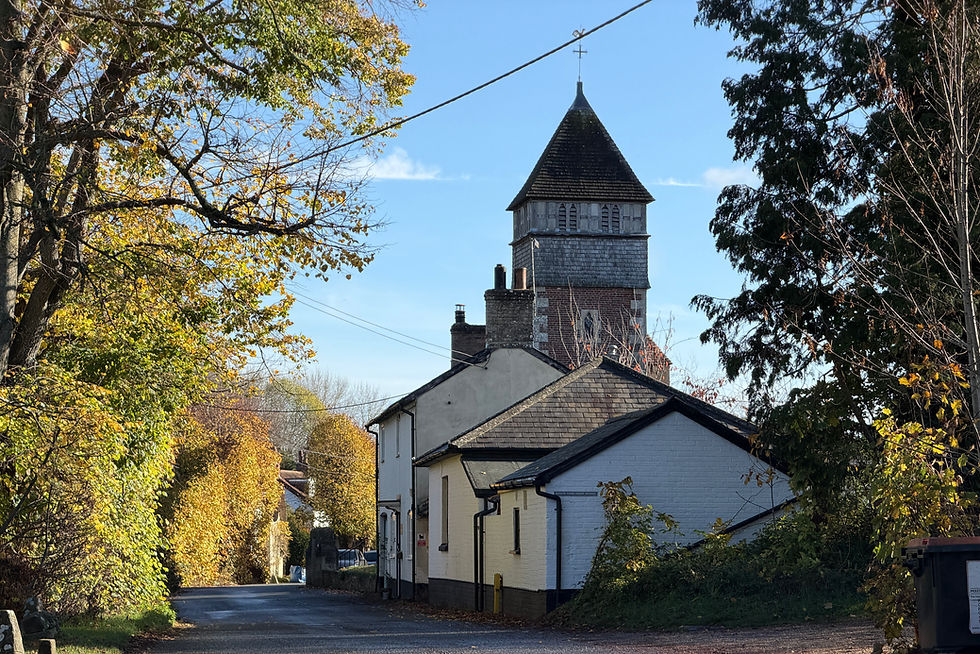RAF Zeals and the Dakota Memorial, Beech Clump
- Glyn Coy
- Jan 10, 2019
- 3 min read
Updated: Nov 14, 2020
In my travels, I have discovered some great historical sites near the Stourhead estate. White Sheet Hill (Iron Age and Neolithic) and Park Hill Camp (Iron Age) are great examples of this.

But I recently discovered that the estate is also home to what is left of RAF Zeals, which was operational between 1942 and 1946. Looking at aerial images on Google Maps, the outline of the base is clearly visible and the area is used as overflow parking for Stourhead at busy times. At ground level, all that is left is the control tower on Bells Lane, which is now a private house.
In 1945, 20 airmen were killed close by in a tragic accident and the Dakota Memorial which commemorates them can be found in Beech Clump (also referred to as Beech Knoll) , west of White Sheet Hill.

Hidden Wiltshire follower John Grech tells the story:
Memorial To Douglas Dakota C-47 Crash At Beech Knoll Near Stourton On The 19th Of February 1945.
Dakota III TS436 from 107 OTU was assigned to the Glider Pick-Up Training Flt, whose role was to train crews in the 'snatch take-off method for retrieving gliders. Those on board were mostly returning to their base in Leicester East, on completion of the course of instruction at RAF Zeals.
The aircraft took off at 15:23 hours in conditions of broken cloud, with some patches down to 100 feet and generally overcast, a westerly wind at 10 mph and visibility of 1 to 2 miles at ground level. The pilot made a quarter circuit of the airfield and then set course to the north-east.
Three minutes later whilst flying in and out of the broken cloud and whilst in level flight, the aircraft flew into a clump of 60-foot tall beech trees on top of Beech Knoll. The impact ripped 10 feet off the port wing and the aircraft rolled to port, hit two more trees and then impaled itself on a cluster of four mature trees, caught fire and disintegrated, scattering wreckage over a distance of 300 yards on the far side of the knoll. Destruction of the aircraft was complete but investigation revealed the engines to have been at a high power setting on impact.
The Accident Report, published on 17th May 1945, suggests that the pilot, who was the sole survivor, had failed to climb to a safe height when flying in poor visibility, although the knoll was a well known obstruction in close proximity to the airfield.

The twenty killed:
Flight Lieutenant Reed Tilton HYDE 33 RCAF Flying Officer James Cassells HOWDEN 29 RCAF Pilot Flying Officer Gerard Jean GUAY 24 RCAF Wireless Operator Flying Officer Mervyn Esmond Llewellyn SCOVELL 33 RCAF Navigator Flight Sergeant Alan Geoffrey SHADDICK 20 RAAF Pilot Flight Sergeant John Ogilvy ALLEN 21 RAAF Wireless Operator Flight Sergeant Leslie Daniel SLIPPER 21 Pilot Flight Lieutenant Thomas Arthur EVANS 23 Pilot Flight Lieutenant Alan James ROBERTS 23 Pilot Flying Officer Sidney Graham WILLIAMS Navigator Flight Sergeant Donald GRANT 21 Navigator Flight Sergeant Maxwell Vernon GILDER Flight Sergeant James ROSS 24 Flight Engineer Flight Sergeant Ronald Edward JELFS 23 Flight Engineer Flight Lieutenant Douglas Elliott TURNBULL 23 Wireless Operator Flight Lieutenant John HEYWOOD Equipment Officer Corporal Kenneth Stanley ANDERSON Aircraftman 2nd Class Reginald Ernest SUGGARS Aircraftman 2nd Class Walter James COLBY 44 Flight Lieutenant Frank Joseph PLANT 27 Navigator.

Blue Skies Always. Per Ardua Ad Astra
All images are copyright of John Grech.








Was great to find this article and to find out there is a monument there. I used to know this area really well about 40 years ago and then there was a gap in the trees. The narrative then was that the trees would never grow back.
I'm in the process of writing a blog about how we can recover from trauma and wanted to use this as an example. Would you mind if I used your picture of the memorial on my blog? I will of course give you photo credits